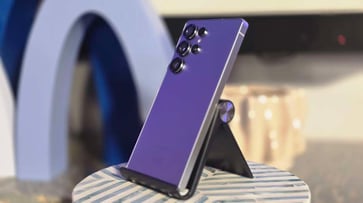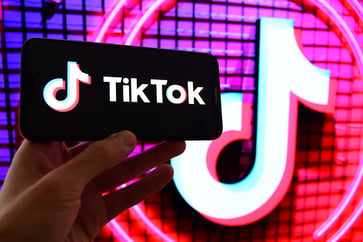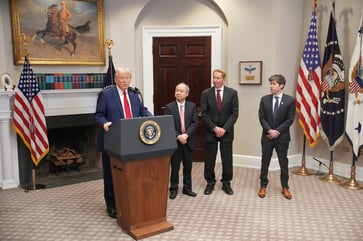How to conduct effective 15-minute meetings

- Some companies are shortening meeting times to 15 minutes by providing more advance information, limiting the number of attendees, and employing bots to manage communication.
- Reducing meeting lengths helps reduce burnout and increase engagement, CEOs told CNBC.
- Adding questions rather than statements to an agenda also helps with efficiency.

Can we make meetings shorter and more engaging?
What is a common question that software CEO Jim Szafranski receives from customers, ranging from start-ups to Fortune 100 companies?
Szafranski, the CEO of Prezi, shared with CNBC via video call that executives can now add visuals and animations to video presentations and meetings, and clients are increasingly requesting shorter live meetings, down to just 15 minutes.
The objective is to enhance employee connectivity, improve meeting productivity, and mitigate burnout caused by fatigue.
Szafranski advises his clients to hold portions of meetings in advance, at a time that suits each participant, to make the live gathering more efficient. One way to do this is to have the meeting leader record a short video explaining the meeting's purpose and decisions that need to be made. This helps the host focus, Szafranski said: "If you're going to send something ahead of time about the meeting, you better have thought about it."
In 2019, Korn Ferry surveyed executives and found that about half of them felt that excessive time spent in meetings hindered their productivity.
In 2021, the company reduced Outlook meeting length defaults after a study of brain waves revealed that half-hour, back-to-back meetings increased stress in participants.

According to Szafranski, sending advance information via video or collaborating via an online system like Google Docs is effective for "asynchronous" communication when staff have different working hours or prefer to structure their day differently. In Prezi, meeting attendees can add topics they want to discuss to a live document, and "knock off" the subjects they can deal with ahead of meetings.
Prezi will no longer hold meetings on Wednesdays starting from Feb. 1, allowing its 300 employees in 13 countries to have uninterrupted "flow time." This means that employees can "push hard" for two days, rebuild their energy and gather their thoughts midweek, and then continue to work more intensely for the remaining days.
Avoiding irrelevance
Martin Smith, CEO of tech PR firm Sonus, aims to improve meeting efficiency.
Smith opted to replace a weekly staff meeting with 15-minute team conferences on Monday to discuss relevant clients. This allowed employees to avoid unnecessary conversations and helped Smith manage his schedule more efficiently. According to Smith, who spoke to CNBC via video call, "going from meeting to meeting to meeting previously ... there was actually very little time to sit down, write or think ... [now] I’ve got these wide gaps on my calendar where I can actually focus."
The business has recently gained several new clients and now utilizes ClickUp integration software to manage projects and facilitate communication among its 15 U.S. and U.K.-based staff. The implementation of the new system, along with shorter meetings, has enhanced the professionalism of the business, as stated by Smith. He explained that presenting a more organized and deliberate approach to clients would make the business more appealing and increase its stickiness.
Since its inception in 2011, software company Zapier has operated remotely with a workforce of approximately 500 individuals in 38 countries. Prior to the pandemic, individual teams held short, daily meetings over Zoom, known as "standups," to update coworkers on their daily tasks, plans for the next day, and any challenges they faced.

In a 2020 blog post, Zapier revealed that its standups sometimes deviated from the intended purpose and resulted in detailed engineering discussions between two participants that may not be relevant to the rest of the team.
The company abandoned the traditional style of meetings and opted for text communication through Geekbot software in a messaging app. The bot prompts team members to report on their work and any challenges, and it only takes approximately one minute for staff to share their progress.
Brandon Sammut, the firm's chief people officer, suggests that people can manage endless notifications on messaging apps by organizing Slack channels by subject and using emojis for quick reactions. If a person finds themselves in an endless Slack thread that doesn't seem to be resolving, it may be time to schedule a Zoom meeting, according to Sammut.
Zapier utilizes automation to streamline recurring meetings by generating agendas, sending them to attendees for review, and providing Zoom links prior to the meeting. This allows for more productive discussions during meetings, enabling the team to focus on ideas rather than administrative tasks.
In person
Robert Chmielewski, CEO of real estate start-up website ShareSpace, believes that in-person meetings are more effective than written formats. According to him, these meetings are better because they can convey emotions, ideas, and openness. He believes that written formats risk losing too much information in translation.
To ensure efficient meetings, Chmielewski's team follows a three-step process. First, organizers must define a clear purpose. If a meeting is necessary, they set an agenda and include specific questions on the topics they want to discuss. Chmielewski emphasizes that questions are more precise than statements, and if the questions are broad and cannot be summarized in a short email, it proves that a meeting is necessary. The duration of the meeting is not the primary goal, but rather a result.
Instead of sending emails that should have been meetings, we avoid causing miscommunication through a three-step process.
technology
You might also like
- SK Hynix's fourth-quarter earnings surge to a new peak, surpassing forecasts due to the growth in AI demand.
- Microsoft's business development chief, Chris Young, has resigned.
- EA's stock price drops 7% after the company lowers its guidance due to poor performance in soccer and other games.
- Jim Breyer, an early Facebook investor, states that Mark Zuckerberg has been rejuvenated by Meta's focus on artificial intelligence.
- Many companies' AI implementation projects lack intelligence.



















